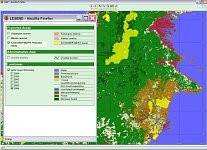Description
This study, carried out for the Institute for Environmental Security (IES), specifically focuses on the Virunga-Bwindi region, an area of high conservation value located in the border region of Uganda, Rwanda and the Democratic Republic of Congo (DRC).
The first part of the report concentrates on the conflicts in the larger Great Lakes region, focusing on Rwanda and the eastern-located Kivu and Ituri regions in the DRC. The report indicates how land and mineral resources have played a significant role in the origins of the violent conflicts in these areas.
The second part of the report deals with conservation of the protected areas in the Virunga-Bwindi region. The area is of interest, not only as the habitat of the mountain gorilla, but also as the ‘water tower’ for the surrounding regions and the connected river basins. An effort is made to identify the various (groups of) stakeholders and to recognize the threats posed to the environment in the national parks. The weakened capacity of park authorities in times of conflict, combined with human encroachment of the protected areas for security reasons as well as for agricultural and commercial purposes, have led to an enormous amount of deforestation.
Also opportunities for conservation are identified: tourism, an international funding mechanism, satellite monitoring, economic diversification and establishing buffer zones are only some of the opportunities that can support sustainable development on the local and regional level.
Moreover, the report looks into the opportunities and constraints for transboundary environmental cooperation. Although setting up a transboundary protected area, a 'peace park', would be a very positive step from a conservation point of view, it remains questionable whether this is feasible in this volatile part of the Great Lakes region.
Information
- Author(s)
- Van de Giessen, Eric
- Publisher
- Institute for Environmental Security
- Place published
- The Hague
- Date / journal vol no.
- July 2005
- Pages
- 50


